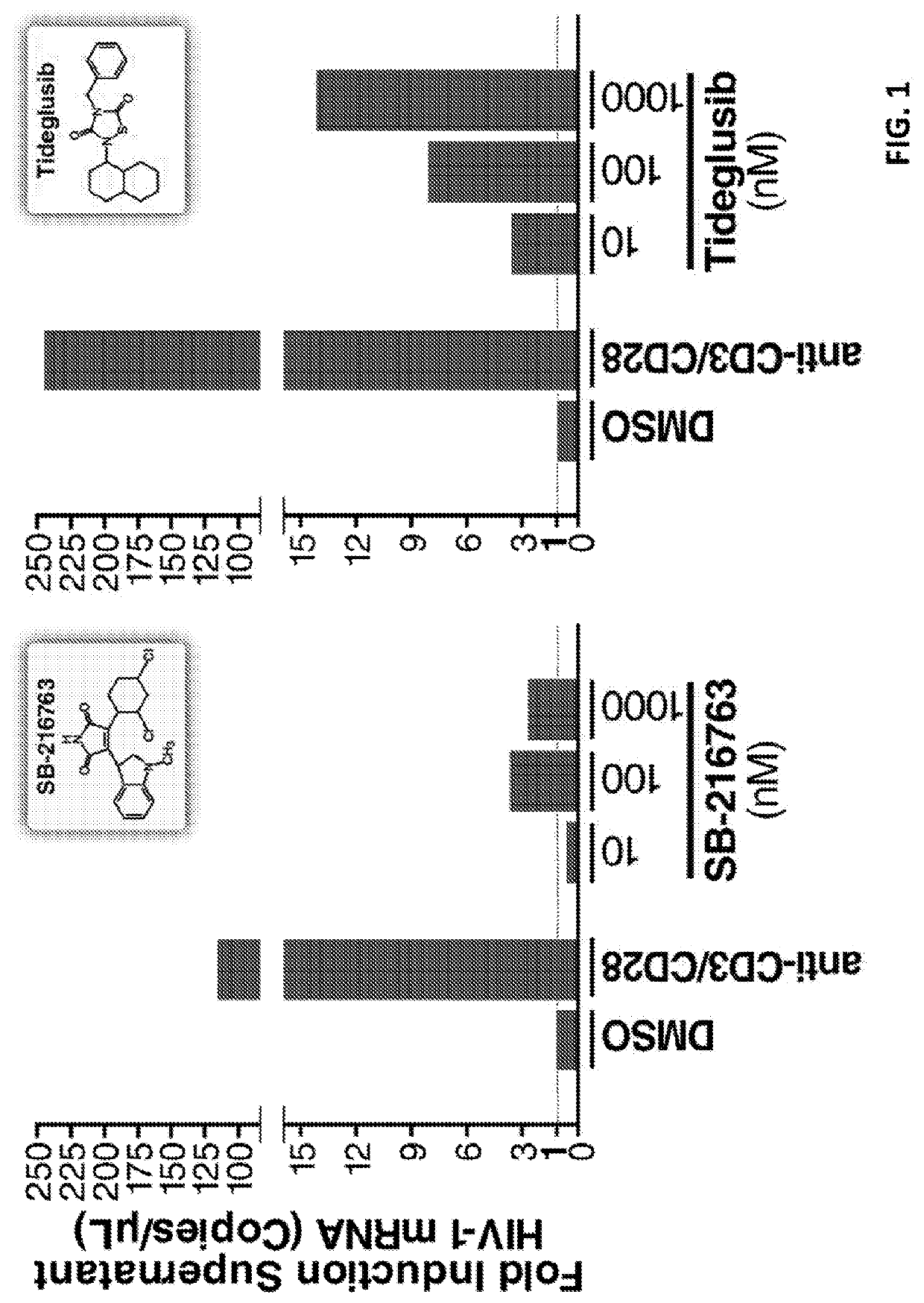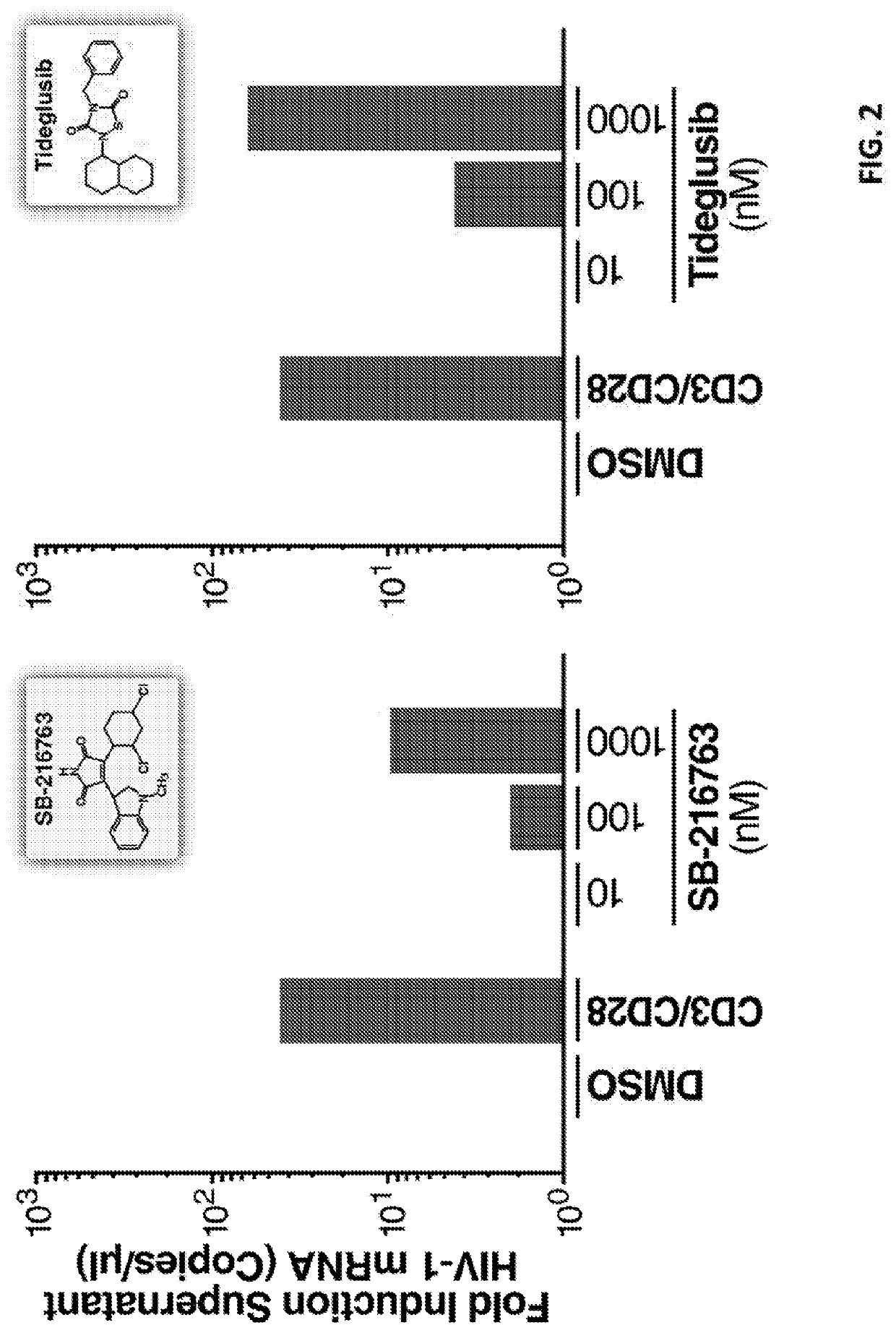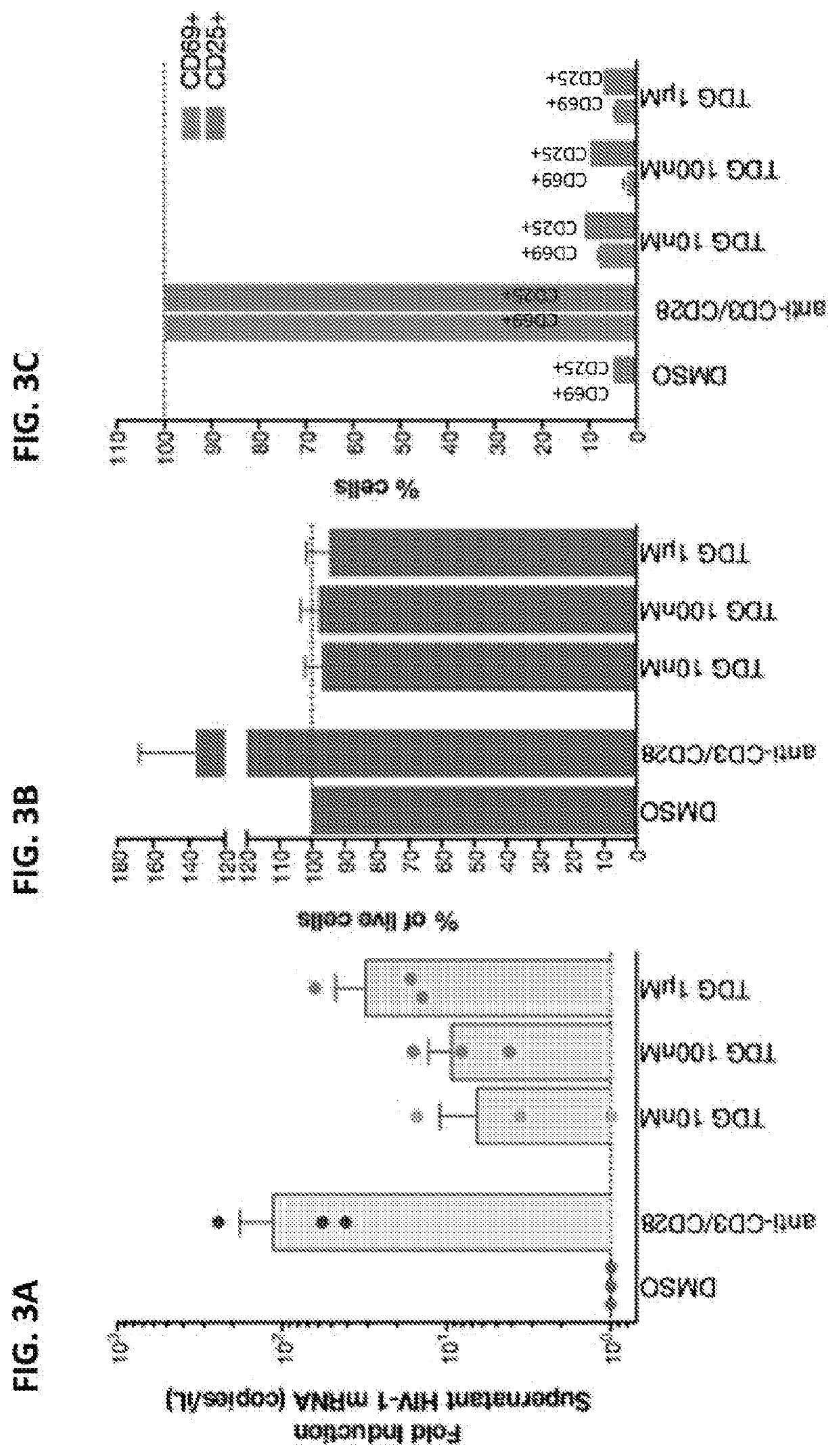Compositions And Methods For Reactivating Latent Immunodeficiency Virus Using A Gsk-3 Inhibitor
a technology of latent immunodeficiency virus and inhibitor, which is applied in the field of compositions and methods for reactivating latent immunodeficiency virus using a gsk3 inhibitor, can solve the problems of inability to eradicate latent reservoirs, severe side effects, and low efficacy
- Summary
- Abstract
- Description
- Claims
- Application Information
AI Technical Summary
Benefits of technology
Problems solved by technology
Method used
Image
Examples
example 1
ion of Latent HIV with the Glycogen Synthase Kinase 3β Antagonist Tideglusib (4-Benzyl-2-(Naphthalen-1-Yl)-1,2,4-Thiadiazolidine-3,5-Dione)
Materials and Methods
[0396]CD4+ T cells were extracted from three HIV-1-infected individuals. The patients were selected by the SCOPE Study (See the website located by placing “https: / / ” immediately preceding “hiv.ucsf.edu / research / scope.html”) on the criteria of suppressive ART (antiretroviral treatment) and undetectable plasma HIV-1 RNA levels (<50 copies per ml) for a minimum of 6 months.
[0397]CD4+ T cells were extracted from peripheral blood mononuclear cells (PBMCs) from continuous-flow centrifugation leukapheresis product and subsequent density centrifugation on a Ficoll-Hypaque gradient. Resting CD4+ T lymphocytes were enriched by negative depletion with an EasySepHuman CD4+ T Cell Isolation Kit (Stemcell). Cells were cultured in RPMI medium supplemented with 10% fetal bovine serum, penicillin / streptomycin and 5 μM Saquinavir. At least 5 m...
example 4
the GSK-3β Inhibitor Tideglusib on CTL and NK Cell Function (Prophetic)
[0403]Lack of significant interference with the function of CTLs and NK cells is a potentially important characteristic for LRAs. Previous studies have confirmed enhancements in CTL response (Taylor et al. Immunity. 2016 Feb. 16; 44(2): 274-286) and NK-mediated killing (Parameswaran et al. Nature Communications 7, Article number: 11154 (2016) doi:10.1038 / ncomms11154) as a result of GSK-3 inhibition, suggesting that Tideglusib should have a similar effect.
[0404]The effect of Tideglusib on CTL function may be determined using an HIV elimination assay modified from Jones et al. PLoS Pathog. 2014 Aug. 14; 10(8):e1004287. doi: 10.1371 / journal.ppat. 1004287. eCollection 2014 August Briefly, HLA-A02+ primary CD4+ T-cells are infected with HIV JR-CSF and then co-cultured with HLA-A02-restricted HIV-specific CTL clone of defined epitope specificity that have been pre-treated for 2 hours with Tideglusib at various concentr...
example 5
Synthase Kinase 3 Inhibitors—Non-Toxic and Non-T-Cell Activating HIV Latency Reversing Agents
Materials and Methods
Study Participants
[0407]HIV-1-infected individuals were enrolled at the Zuckerberg San Francisco General Hospital based on the criteria of suppressive ART and undetectable plasma HIV-1 RNA levels (1 billion Peripheral blood mononuclear cells (PBMCs).
Isolation and Culture of Peripheral Blood Mononuclear Cells, CD4+ T Cells and Gut Associated Lymphoid Tissue Cells PBMCs were purified from whole blood or continuous flow centrifugation leukapheresis products via density centrifugation on a Ficoll-Hypaque gradient.
[0408]Subsequently, resting CD4+ T cells were enriched by negative depletion with an EasySepHuman CD4+ T Cell Isolation Kit (STEMCELL). Enriched cells were cultured in RPMI medium supplemented with 10% fetal bovine serum, penicillin / streptomycin. PBMCs and CD4+ T cells from HIV-positive donors were cultured and treated in the presence of 5 μM saquinavir. For gut-ass...
PUM
 Login to View More
Login to View More Abstract
Description
Claims
Application Information
 Login to View More
Login to View More - R&D
- Intellectual Property
- Life Sciences
- Materials
- Tech Scout
- Unparalleled Data Quality
- Higher Quality Content
- 60% Fewer Hallucinations
Browse by: Latest US Patents, China's latest patents, Technical Efficacy Thesaurus, Application Domain, Technology Topic, Popular Technical Reports.
© 2025 PatSnap. All rights reserved.Legal|Privacy policy|Modern Slavery Act Transparency Statement|Sitemap|About US| Contact US: help@patsnap.com



